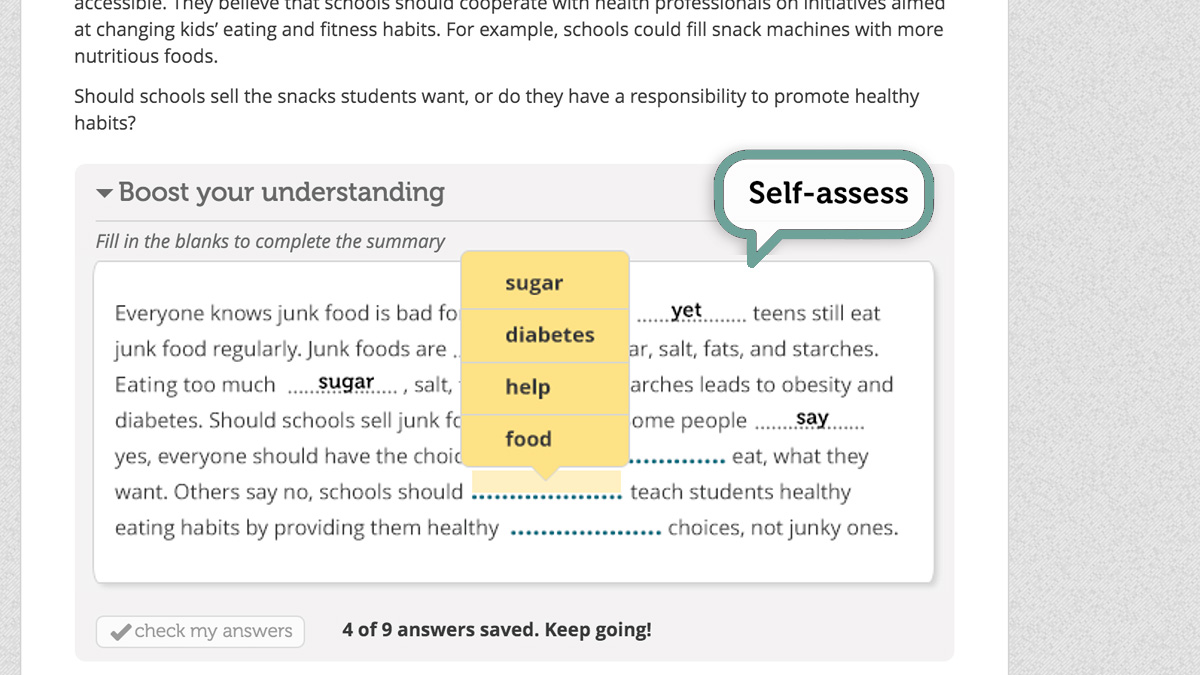Comprehension Checks
How can students check their own understanding of a piece of text? How can teachers quickly get a sense of student understanding in order to determine what to reteach or what feedback to give? By embedding comprehension checks, both students and teachers can get quick feedback that can help them know when to move ahead to new content or revisit challenges.
Our demo doesn’t have embedded comprehension checks yet, but a future version might. Tell us what you think about this feature and send us related research to explore by emailing clusive@cast.org.

Embedded comprehension checks can help teachers and students understand what students took away from the reading.
Research
- Several studies have found an association between formative assessment and improved academic achievement. The literature review linked below summarizes 9 studies that reported benefits of formative assessment for student achievement in a range of grade levels and subject areas. Of these, 5 studies are especially relevant because they evaluated the impact of formative assessments without additional in-person supports (e.g., teacher support). These 5 studies, mostly in undergraduate populations, found greater academic gains among students who took a formative assessment. However, these 5 studies did not include control groups; it is possible that other factors could explain reported gains.
- Online comprehension checks may support teacher practice and learning for students with disabilities. A study found that teachers who used online curriculum-based measurement (CBM, a form of comprehension check) viewed data, designed interventions, and modified supports 3 times more frequently than teachers using offline CBM. Students with learning disabilities made more significant learning gains when using online CBM than when using offline CBM.
- Comprehension check features may affect students’ performance.
- The type of feedback matters. A meta-analysis of computer-based item-level feedback found that elaborated feedback (providing an explanation) produced greater learning gains than feedback regarding the correctness of the answer or providing the correct answer.
- Images may be helpful for elementary students. A study among 7-8 year-old general education students found that students performed better on multiple-choice assessments that included relevant images than on a multiple-choice assessment without images.
Related Guidelines
The features of the CISL tools are related to existing guidelines and best practices, including the Web Content Accessibility Guidelines (WCAG) and the Universal Design for Learning (UDL) Guidelines. The feature of embedded comprehension checks is connected to:
Universal Design for Learning (UDL) Guidelines
- UDL Checkpoint 6.4: Enhance capacity for monitoring progress
- UDL Checkpoint 9.3: Develop self-assessment and reflection
Embedded comprehension check examples
Interested in seeing how other projects are using embedded curriculum-based measurement? Check out CBMreading for an example of how this can be put into practice. Reading Rockets includes Target the Problem!, a tool to point to students’ reading challenges.
